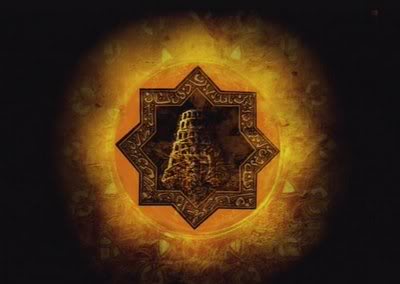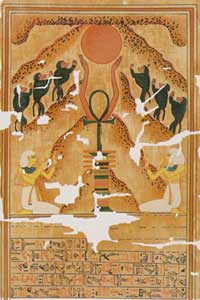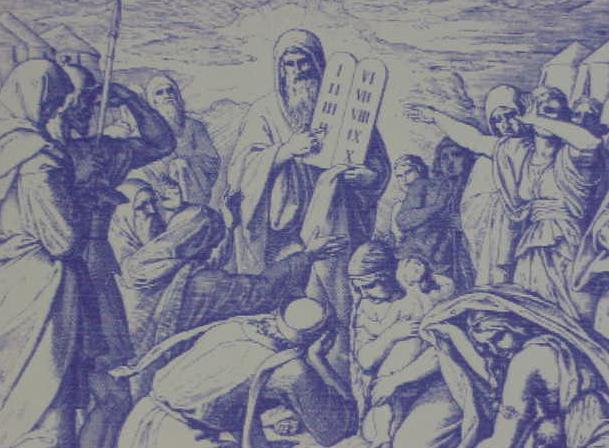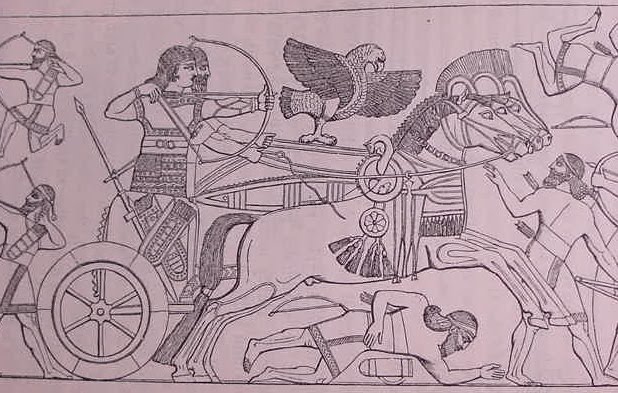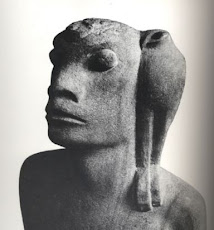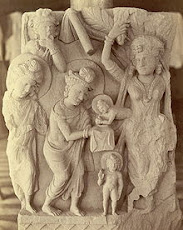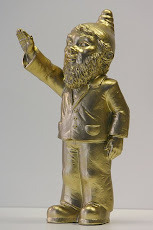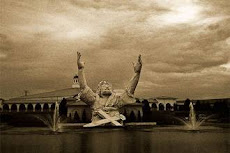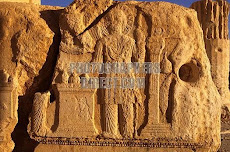When emperor Hadrian captured Jerusalem, he changed the name of the city of David to Aelia Capitolina, erected there altars to all the gods and forbade the Jews to observe the rite of circumcision. In Ad 135 emperor Hadrian founded in Rome the school of philosophy, oratory and literature which he called Atheneum. The unique status of the goddess Athene, the patroness of Athens is implicit in the story of her motherless birth – she was born directly from Zeus’s brain, so she could be called Logos! With the help of this school the Roman emperors will try to transform the Christianity of Jerusalem into Catholicism at Rome.
During most of his political career, Constantine seems to have thought that the Unconquered Sun and the Christian God were compatible – perhaps two view of the same Supreme deity – and that the other gods, although subordinate, were nevertheless real and relatively powerful. Thus, on occasion, he would consult the oracle of Apollo, accept the title of High Priest, or Pontiff that had traditionally been the prerogative of emperors, and partake of all sorts of pagan ceremonies without thinking that he was thus betraying or abandoning the God who had given him victory and power. The ancient gods were far from forgotten. Christianity had made very little progress among the old aristocracy and the rural masses. There were in the army many followers of Mithra and other gods.
GALILEO'S CIRCLET
Using his method of squaring circle Kepler turned Copernican circles into ellipses. Newton who embraced Kepler’s method adopted also his ellipses. But Galileo rejected Kepler’s “improvement” and retained Copernicus’s circular orbits.
Galileo’s own drawing of the heavens, published in his Dialogue in 1632, explains why he retained circular orbits. The circle in the middle of the zodiac is not the sun; it is the orbit of the sun, which is marked by the circlet on the circumference. Galileo, exactly like Copernicus, viewed the sun as the mythological sun god driving his chariot in a circle.
Consider these lines by Shakespeare:
Hark, Hark! The lark at heaven’s gate sings,
And Phoebus’s gins arise.
Middle English ginne was short for Old French engine. Gin-horse moves in a circle or track.
The Academy of Athens and the Museum of Alexandria, the two great centers of learning of the time, were devoted to the study of ancient pagan wisdom. An imperial decree could not undo all this – not yet, anyway. And in any case the emperor himself, who saw no contradiction between the Unconquered Sun and the Incarnate Son, was not inclined to issue such a decree. And this tradition endured for centuries. Renaissance Pope Pius II (1458-64) believed that the Roman Empire had fallen because the scholars had deserted paganism for the Papacy. After Giovanni di Medici was elected Pope Leo X (1475-1521) a lampoon was posted on the Pasquino Navona to the effect that Giovanni might make a good Pope if only he believed in God. Rome greeted death of Pope Adrian VI’s after only one-year pontificate with great joy. Some believed that he was poisoned by his physician. Rome does not tolerate a Christian Pope.
Statements of speculative philosophy were termed by Latin writers: decreta, scita, placita, axiomata, enunciata, effata. Cicero replaced all these terms by one: dogmata. Inquisition was not an invention of the Catholic Church; already Plato wanted to defend his dogma with help of such institution.
Galileo turned his telescope to Saturn and wrote to J. Kepler: “Altissimum planetam tergemium observavi” (I have observed that the farthest planet is threefold). The last word of Galileo’s solution is especially revealing. He does not advocate his conclusion by stating “I conjecture,” “I infer,” or “it seems to me that the best interpretation is…” Galileo simply said: I have observed it; I have seen it with my own eyes.
In 1975 Prof. S. Sambursky, a friend of Einstein’s introduced Copernicus to the Israel Academy of Science and Humanities as “the man who initiated this era of modern science…as the man who by the sheer force of imagination broke the chains of sense perception, the ingenious discoverer of a scientific truth involving one of the greatest revolutions in man’s view of the world.” (See, Proceedings of the Israel Academy of Science and Humanities, vol. V, No. 11).
Truth is that "astronomers can see nothing" beyond the "shell of radiation". What they claim to see is fabricated and computer programmed, as this scientist who is beginning to smell a very big rat notes: "It is well to remember that a great deal of modern cosmology, especially when its practitioners are trying to predict its destiny and retrodict its origin, is sheer mathematical manipulation and evolutionary philosophical imagination. ‘It ain’t necessarily so!"
Consider the case of the planet Saturn as seen by Galileo. When he turned his telescope on Saturn in 1610 he saw Saturn to be not a single star, but three together, which almost touch each other, he wrote. His telescope was magnifying just 20 times, so it showed the rings but made them appear as lobes on either side of the planet. Galileo was puzzled when the lobes vanished a few years later.
He abjured nothing about his previous observations, or about the righteousness of the empirical method in general. He merely made a classical allusion to the myth about the planet's “bodacious” eponym:
“But in the past few days I returned to it and found it to be solitary, without its customary supporting stars, and as perfectly round and sharply bounded as Jupiter. Now what can be said of this strange metamorphosis? That the two lesser stars have been consumed? ... Has Saturn devoured his children? Or was it indeed an illusion and a fraud with which the lenses of my telescope deceived me for so long?”
Most likely, the threefold body of Saturn as seen by Galileo was inspired by the classical depictions of the planet in which the two snakes driving the chariot of the god Saturn match the delusional vision of Galileo. Possibly, there is a direct link between Galileo's observations and a fancy dress worn by Elizabeth I, Queen of England as depicted in her portrait preserved in Metropolitan Museum of Art, in New York.
Einstein himself admitted, "When I examine myself and my methods of thought I come to the conclusion that the gift of fantasy has meant more to me than my talent for absorbing positive knowledge.” The word "fantasy" equates, of course, with such things as: "delusion, illusion, misconception, trick, fool’s paradise, self-deception, hallucination, false light, figment of the imagination, something unsubstantial, thin air, mockery", etc.
Benedict XVI vs. John Paul II
In the 1980s pope John Paul II started the process of rehabilitation of Galileo. He convened a commission of scientists, historians and theologians to review the case. They reached the amazing conclusion that the judges who condemned Galileo had been wrong. By 1984 it seemed that the Catholic Church was ready to admit that the Bible may not be the most reliable guide to the way the universe actually works. John Paul acknowledged that the Bible should not be taken literally because “the intention of the Holy Spirit is to teach how to go to heaven and not how to get to the heavens.”
But on March 15, 1990 speaking at La Sapienza, the then Cardinal Ratzinger declared that the church had been quite right to try and punish Galileo and he quoted the Austrian philosopher Paul Feyerabend, who said: “At the time of Galileo the church remained much more faithful to reason than Galileo himself. The process against Galileo was reasonable and just.” Obviously the current pope wants to retreat from John Paul II's position.
The authorities at La Sapienza University had invited Pope Benedict XVI to come and speak at the inauguration of the new academic year, but the physics department mobilized in protest and the pope was forced to cancel his appearance.
The controversy began when in November 2007 an emeritus professor of physics, Marcello Cini, wrote an open letter to the rector of La Sapienza, published by the communist newspaper Il Manifesto. In this letter Cini launched a ferocious attack on the rector for having invited the pope. Cini claimed that pope Benedict's right to speak would signal a leap backwards of at least 300 years. Cini attempted to discredit the pope's conviction that reason and faith are compatible ,because in his opinion this idea is merely the continuation of the battle against science which was fought by the inquisition and would serve no other purpose than to impose religious dogma and pseudo-scientific methods.
In the opinion of the former Vatican spokesperson Navarro-Valls, particularly emblematic was one of the slogans put up by a protestor, who offered the saying: “science is secular!” Indeed, because the use of an adjective such as “secular” is quite curious in defense of a value that's been sacrosanct for at least seven centuries, which is the autonomy and freedom of research in the university. What is the exact meaning of the secular humanism?
During the Enlightenment, Gnostic Luciferianism was disseminated on the popular level as secular humanism. All of the governing precepts of Gnostic Luciferianism are encompassed by secular humanism. This is made evident by the philosophy's rejection of theistic morality and enthronement of man as his own absolute moral authority. While Gnostic Luciferianism has no sacred texts, Humanist Manifesto I and II succinctly delineate its central tenets. Whittaker Chambers, former member of the communist underground in America, eloquently summarizes this truth:
"Humanism is not new. It is, in fact, man's second oldest faith. Its promise was whispered in the first days of Creation under the Tree of the knowledge of Good and Evil: 'Ye shall be as gods.'"
I doubt that Cini and his co-religionists throughout the world would ask a Muslim religious representative to issue a “mea culpa” for the persecution of Averroes, a vile heliocentric atheist before setting foot in “La Sapienza.” According to the well-known psychological rule, the thoughtless multitude of the Buddhists turned the atheistic Buddha into their new god and according to the same rule the learned world venerates Copernicus, Galileo, Newton as new gods ruling supreme over Science. This Science is personified in front of La Sapienza by the statue of the goddess Minerva, a Roman counterpart of the Greek Athene who was depicted in a dress adorned with swastikas. (Google Images of Athene)
Quite recently La Sapienza took the responsibility not only for hosting and organizing the worldwide meeting of university rectors, but above all for making the complex proposal for the development of a “new humanism for the third millenium.” Or Global Science for the Third Reich of the Third Millenium.
Friday, February 29, 2008
Friday, February 8, 2008
The Marvels of the Moon
It would be nice to pretend, as the so-called theistic evolutionists do, that the study of evolution can be carried out without having any effect on religion. The heart of the matter is that evolution is, by definition, a story of origins, like the myth of Tammus, or Mithra and of many others. This means that it really does supersede another creation story – in particular, the creation story as the very core of Judeo-Christian narrative.
Indian religious philosophy regards the universe as resulting from a non purposive manifestation of, or emanation from, an absolute unity that is not personal in any strict sense.
In the Assyrian inscriptions we find recorded the Chaldeo-Babylonian idea of an evolution of the universe out of the primeval flood or “great deep,” and of the animal evolution out of the earth and sea (cp. Darwin's “warm pond”).
The general idea of evolution in Nature, transmitted from the Chaldeans through the Phoenicians, took strong hold upon Greek thought and was developed in many perverse ways; Aristotle sometimes developed it in a manner which reminds us of modern views.
Hand in hand with evolutionism goes the idea that the Universe is built of four basic elements. In ancient Greece, at the very dawn of philosophy itself, a group who are now called atomists (particularly Leucippus and Democritus) postulated that all matter was formed of “atoms”, which were small, hard and indestructible. They taught that the atoms moved in a void, and that it was in eternal fallings and collisions of them that creates everything in the world (in modern Science, these fallings and collisions were initiated by “Big Bang”). By postulating the void that all atoms “fell” with relation to, they were perhaps the first explicit absolutists in history. They inspired Newton's absolute Space. He speculated, If ever Space had not existed, God at that time would have been nowhere.
Before the end of the 16th century, Galileo has begun expexperimenting with inclined planes and pendula, and had come up with some remarkable results, including that all objects “fall” (or roll down the inclined plane) at the same rate, regardless of their mass or the steepness of the slope.
Let me remind here that Galileo, using his telescope, claimed that he saw the detail of the moon that is invisible to the naked eye. This claim was consistent with the fundamental heliocentric dogma that the earth is one of heavenly planets and in this sense the title of Copernicus's book is to be understood, The Rebvolutions of the heavenly bodies.
Galileo's renderings revealed the moon shadows as craters, hills and valleys. Identifying such Earthlike topography in a heavenly “body” was an important step toward the conclusion that later put him at odds with the Catholic Church: that Earth was not the center of the universe.
Do they see rains on the Moon with their telescopes?
T. Campanella in his Apologia pro Galileo (Frankfurt 1623) was well aware that Galileo's inspiration for seeing the detail of the moon that is invisible was derived from the same source as Muhammad's claim about billions upon billions of virgins inhabiting the “heavenly bodies” built of four philosophical elements. He wrote:
“Galileo also says that water exists on the moon and the planets which cannot be. These bodies are incorruptible, for do not all scholastics contend with Aristotle that they endure without change throughout all time? He describes land and mountains in the Moon and other celestial globes, and not only vilifies immeasurably the homes of angels, but lessens our hope regarding Heaven.
“If the four elements which form our world exist in the stars, it follows from the doctrine of Galileo that, as Muhammed declared, there are many worlds with lands and seas and with human inhabitants. In Surah Fatiha Allah is called the “Lord of the Worlds” (plural). However, Scripture speaks of only one world and of one created man, so that this belief is opposed to Scripture. I pass without comment the opinion that Galileo has revived the heresy that Christ must make atonement for the men who inhabit the stars and die there again; just as formerly it was said that Christ must be crucified a second time in the antipodes, if the men living there were to be saved as we have been saved. In other words, Galileo's Christ was a perpetual pilgrim, like John Paul II was.
Muhammad, for political reasons, rejected the idea of the Biblical Eden planted by God in earth and embraced instead the idea of the Garden of Immortality that the Babylonian myth placed in Heaven. Unlike the Biblical Adam who was simply “sent forth from the garden of Eden” (Gen. 3:23), the Koran's Adam was “sent down from the Garden” (Sura Ta-Ha 20:123). Similarly, in the so-called Gospel of Marcion Jesus was sent down, maybe from a hanging, heavenly garden,” like a certain Clark Kent who can live in Smallville, like huris can live up there:
In the fifteenth year of Tiberius Caesar,
Pontius Pilate being governor of Judea,
Jesus descended (out of heaven) into Capernaum, a city in Galilee,
and was teaching (in the synagogue) on the Sabbath days,
And they were astonished at his doctrine (3:1/4:31)
Muhammad, like the Babylonian godman Etana ascended to heaven on the horse called Buraq. And remember all those killers on the way to the Virgins.
Newton took both impenetrability, and the lawlike behavior of bodies, to be essential features of our conception of body. Inspired by Galileo's idea of “Fall” he imagined the planets are falling to their common center of gravity like apples are falling to the ground of earth.
The first telescopic observations of the moon on record were carried out by the Englishman Thomas Harriot (c. 1560-1621), on the evening of July 26, 1609. However, based on his extant correspondence as well as entries in his notebooks, as in the case of sunspots Harriot did not appear to have drawn any particular physical significance from what he saw.
We know that some people can see phases of Venus with naked eye and maybe Moses was one of them.
One cannot help but wonder, is the moon a heavenly body (like a material girls, or huris) in the Copernican sense, or is it a light serving as a sign: “And God said,. 'Let there be lights in the heaven to divide the day from the night; and let them be for signs, and for seasons, and for days and years.” (Gen 1:14)
We learn from the Mishna Treatise Rosh Hashana 2:8 that “Rabban Gamliel had a chart of moon shapes on a wall, and he would show this to the people, and ask: Was it like this one? Like that one?” And that's exactly what the word 'sign' means.
The Russian Professor of astronomy A.B. Arkhipov in his book Nyerazgadannye Tainy Vsyelennoy (The Unsolved Secrets of the Universe) published in Moscow (2004 ISBN 5-94538-446-1) among the lunar marvels mentions the following astronomical events described in ancient chronicles:
1048 The Armenian Chronicle of Etaum Patmich of the 13th century reads: “In that year, on May 14, in the early night during the New Moon a star was visible on the disc of the Moon. According to Armenian astronomers Barsegyan and Parsamyan an attempt to identify this star with the supernova of 1054 means stretching the truth.
1064 “In those days a star of unusual brightness appeared within the circle of the moon after a few days following her moving away from the sun. J. Malvesius Chronicon (Muratori L.A. Retum Italicarium scriptores. Lib. 14. Milan, 1729, p. 873)
1540 W.S. Cameron's Lunar transient phenomena catalog (NSSDC/WDC-A-R&S 78-03, Greenbelt: NASA, 1978, p. 109) describes a strange engraving depicting a star which appeared On November 26 on the black part of the New Moon
The same catalog mentions that on March 5, 1587 many people saw a star within the circle of the Moon “exactly between the edges of her horns.”
On page 136 of Prof. Arkhipov's book you'll find two copies: one representing a Byzantine coin depicting a star inside the horns of the New Moon (see the flag of Turkey and of other Muslim states) and a similar event as depicted by the pre-Columbian astronomers of Peru.
Cultural blindspots prevent people from seeing things that are perfectly obvious in other cultures. Furthermore, even within a culture that is capable of perceiving something, individuals usually cannot see things until they are educated to them (like the Gestalt Psychology does). Exactly, like Moses was educating his people by giving them the ordinance to look out for the New Moons.
So try it for yourself and you'll see with your naked eyes. You'll see the blue sky through the “cutout” of the new moon, and sometimes the black part of it, which, obviously blocks the view of the blue sky, but not always, contrary to Galileo's claim. And then, you will be bound to ask yourself the question, is Venus a body too if I can see blue sky through the cutout of its crescent. And then, maybe, you will admit that the earth created by G-d as our homeland is totally unique in the Universe. Exactly, like the Torah claims. Everything up there is to remind us of times, and seasons, and years and of other events important for our lives. And then you'll find easily the answer to the question why God created the heaven first: In the beginning God created the heaven and the earth.
Indian religious philosophy regards the universe as resulting from a non purposive manifestation of, or emanation from, an absolute unity that is not personal in any strict sense.
In the Assyrian inscriptions we find recorded the Chaldeo-Babylonian idea of an evolution of the universe out of the primeval flood or “great deep,” and of the animal evolution out of the earth and sea (cp. Darwin's “warm pond”).
The general idea of evolution in Nature, transmitted from the Chaldeans through the Phoenicians, took strong hold upon Greek thought and was developed in many perverse ways; Aristotle sometimes developed it in a manner which reminds us of modern views.
Hand in hand with evolutionism goes the idea that the Universe is built of four basic elements. In ancient Greece, at the very dawn of philosophy itself, a group who are now called atomists (particularly Leucippus and Democritus) postulated that all matter was formed of “atoms”, which were small, hard and indestructible. They taught that the atoms moved in a void, and that it was in eternal fallings and collisions of them that creates everything in the world (in modern Science, these fallings and collisions were initiated by “Big Bang”). By postulating the void that all atoms “fell” with relation to, they were perhaps the first explicit absolutists in history. They inspired Newton's absolute Space. He speculated, If ever Space had not existed, God at that time would have been nowhere.
Before the end of the 16th century, Galileo has begun expexperimenting with inclined planes and pendula, and had come up with some remarkable results, including that all objects “fall” (or roll down the inclined plane) at the same rate, regardless of their mass or the steepness of the slope.
Let me remind here that Galileo, using his telescope, claimed that he saw the detail of the moon that is invisible to the naked eye. This claim was consistent with the fundamental heliocentric dogma that the earth is one of heavenly planets and in this sense the title of Copernicus's book is to be understood, The Rebvolutions of the heavenly bodies.
Galileo's renderings revealed the moon shadows as craters, hills and valleys. Identifying such Earthlike topography in a heavenly “body” was an important step toward the conclusion that later put him at odds with the Catholic Church: that Earth was not the center of the universe.
Do they see rains on the Moon with their telescopes?
T. Campanella in his Apologia pro Galileo (Frankfurt 1623) was well aware that Galileo's inspiration for seeing the detail of the moon that is invisible was derived from the same source as Muhammad's claim about billions upon billions of virgins inhabiting the “heavenly bodies” built of four philosophical elements. He wrote:
“Galileo also says that water exists on the moon and the planets which cannot be. These bodies are incorruptible, for do not all scholastics contend with Aristotle that they endure without change throughout all time? He describes land and mountains in the Moon and other celestial globes, and not only vilifies immeasurably the homes of angels, but lessens our hope regarding Heaven.
“If the four elements which form our world exist in the stars, it follows from the doctrine of Galileo that, as Muhammed declared, there are many worlds with lands and seas and with human inhabitants. In Surah Fatiha Allah is called the “Lord of the Worlds” (plural). However, Scripture speaks of only one world and of one created man, so that this belief is opposed to Scripture. I pass without comment the opinion that Galileo has revived the heresy that Christ must make atonement for the men who inhabit the stars and die there again; just as formerly it was said that Christ must be crucified a second time in the antipodes, if the men living there were to be saved as we have been saved. In other words, Galileo's Christ was a perpetual pilgrim, like John Paul II was.
Muhammad, for political reasons, rejected the idea of the Biblical Eden planted by God in earth and embraced instead the idea of the Garden of Immortality that the Babylonian myth placed in Heaven. Unlike the Biblical Adam who was simply “sent forth from the garden of Eden” (Gen. 3:23), the Koran's Adam was “sent down from the Garden” (Sura Ta-Ha 20:123). Similarly, in the so-called Gospel of Marcion Jesus was sent down, maybe from a hanging, heavenly garden,” like a certain Clark Kent who can live in Smallville, like huris can live up there:
In the fifteenth year of Tiberius Caesar,
Pontius Pilate being governor of Judea,
Jesus descended (out of heaven) into Capernaum, a city in Galilee,
and was teaching (in the synagogue) on the Sabbath days,
And they were astonished at his doctrine (3:1/4:31)
Muhammad, like the Babylonian godman Etana ascended to heaven on the horse called Buraq. And remember all those killers on the way to the Virgins.
Newton took both impenetrability, and the lawlike behavior of bodies, to be essential features of our conception of body. Inspired by Galileo's idea of “Fall” he imagined the planets are falling to their common center of gravity like apples are falling to the ground of earth.
The first telescopic observations of the moon on record were carried out by the Englishman Thomas Harriot (c. 1560-1621), on the evening of July 26, 1609. However, based on his extant correspondence as well as entries in his notebooks, as in the case of sunspots Harriot did not appear to have drawn any particular physical significance from what he saw.
We know that some people can see phases of Venus with naked eye and maybe Moses was one of them.
One cannot help but wonder, is the moon a heavenly body (like a material girls, or huris) in the Copernican sense, or is it a light serving as a sign: “And God said,. 'Let there be lights in the heaven to divide the day from the night; and let them be for signs, and for seasons, and for days and years.” (Gen 1:14)
We learn from the Mishna Treatise Rosh Hashana 2:8 that “Rabban Gamliel had a chart of moon shapes on a wall, and he would show this to the people, and ask: Was it like this one? Like that one?” And that's exactly what the word 'sign' means.
The Russian Professor of astronomy A.B. Arkhipov in his book Nyerazgadannye Tainy Vsyelennoy (The Unsolved Secrets of the Universe) published in Moscow (2004 ISBN 5-94538-446-1) among the lunar marvels mentions the following astronomical events described in ancient chronicles:
1048 The Armenian Chronicle of Etaum Patmich of the 13th century reads: “In that year, on May 14, in the early night during the New Moon a star was visible on the disc of the Moon. According to Armenian astronomers Barsegyan and Parsamyan an attempt to identify this star with the supernova of 1054 means stretching the truth.
1064 “In those days a star of unusual brightness appeared within the circle of the moon after a few days following her moving away from the sun. J. Malvesius Chronicon (Muratori L.A. Retum Italicarium scriptores. Lib. 14. Milan, 1729, p. 873)
1540 W.S. Cameron's Lunar transient phenomena catalog (NSSDC/WDC-A-R&S 78-03, Greenbelt: NASA, 1978, p. 109) describes a strange engraving depicting a star which appeared On November 26 on the black part of the New Moon
The same catalog mentions that on March 5, 1587 many people saw a star within the circle of the Moon “exactly between the edges of her horns.”
On page 136 of Prof. Arkhipov's book you'll find two copies: one representing a Byzantine coin depicting a star inside the horns of the New Moon (see the flag of Turkey and of other Muslim states) and a similar event as depicted by the pre-Columbian astronomers of Peru.
Cultural blindspots prevent people from seeing things that are perfectly obvious in other cultures. Furthermore, even within a culture that is capable of perceiving something, individuals usually cannot see things until they are educated to them (like the Gestalt Psychology does). Exactly, like Moses was educating his people by giving them the ordinance to look out for the New Moons.
So try it for yourself and you'll see with your naked eyes. You'll see the blue sky through the “cutout” of the new moon, and sometimes the black part of it, which, obviously blocks the view of the blue sky, but not always, contrary to Galileo's claim. And then, you will be bound to ask yourself the question, is Venus a body too if I can see blue sky through the cutout of its crescent. And then, maybe, you will admit that the earth created by G-d as our homeland is totally unique in the Universe. Exactly, like the Torah claims. Everything up there is to remind us of times, and seasons, and years and of other events important for our lives. And then you'll find easily the answer to the question why God created the heaven first: In the beginning God created the heaven and the earth.
Subscribe to:
Comments (Atom)



















































































































































































































































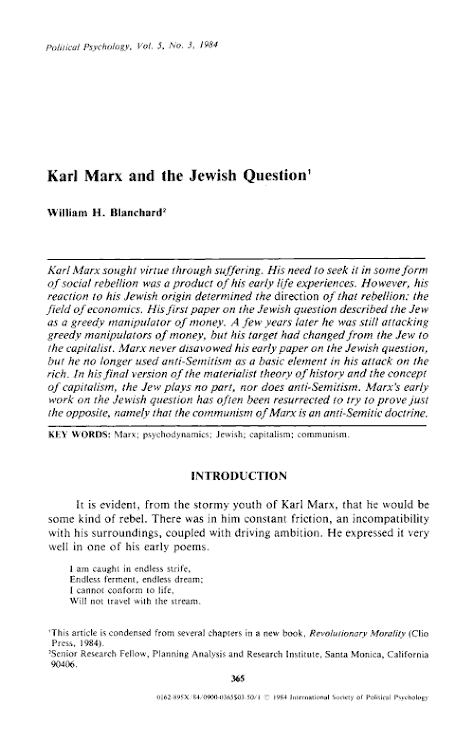











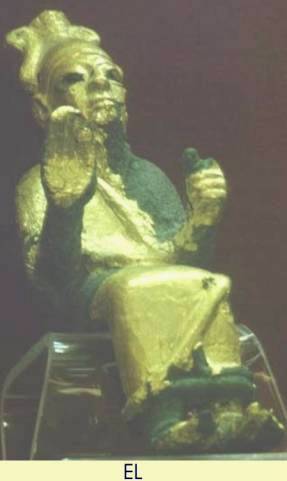

































+Anniversay+Dinner.jpg)





